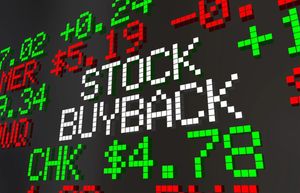
Since United Parcel Service, Inc. (NYSE: UPS) is considered a bellwether for global economic health, it might be time for a check-up.
The world’s largest delivery company offered a meek full-year outlook last week that suggests e-commerce and B2B activity continues to be slowed by higher prices and interest rates. Combined with mildly disappointing first quarter results, UPS shares suffered a two-day 12% selloff. Helped by a broad market rally to close the week, UPS limps into May 2023, trading more than 20% below last year’s record peak.
While the drop may spell trouble for near-term economic conditions, for long-term investors, the timing looks right to dabble in the S&P 500’s 44th largest company. A 3.6% forward dividend yield, strong secular tailwinds and a reasonable valuation make UPS the ‘complete package’ for growth and income portfolios.
Why Did UPS Stock Go Down?
On April 25th, UPS announced Q1 earnings per share (EPS) that were down -28% year-over-year but roughly in line with consensus. Revenue fell 6% and was slightly below the Street. Neither result was terrible, considering expectations and the softer economic environment to start 2023.
The icing on the cake, however, was that management lowered its 2023 guidance because global shipment volumes slowed more than anticipated in Q1. The revised 2023 revenue forecast is $97 billion, $1 billion below the originally targeted range of $98 billion to $102 billion. And after the Q1 operating margin declined 2.5%, a reduced full-year operating margin also didn’t sit well with the market.
Yet given the narrow misses on all fronts, was a 12% selloff too much? It appears so.
What Is the Growth Outlook for UPS?
Despite the cautious short-term view, CEO Carol Tome expressed optimism about UPS’s multiyear outlook. While recognizing the impact of macro headwinds on sales volumes, the former Home Depot CFO vowed that the company will “ come out of this demand cycle even stronger.”
Ms. Tome’s confidence is backed by several favorable trends, not the least of which is global e-commerce growth. As a provider of shipping and return services for some of the world’s biggest online retailers, UPS is positioned to benefit from the ongoing shift from physical to digital storefronts. Online spending in the U.S. has slowed from breakneck pandemic levels but remains a driving force behind consumer purchase decisions.
One challenge that the new leadership team will need to work through is de-globalization. Lessons learned from the pandemic and a growing sense of nationalism have governments and businesses increasingly turning to local supply chains and logistics. Since International and Supply Chain Solutions account for about one-third of sales, getting more out of these units in the face of localization will be an important theme.
Another sign of confidence is management’s recent decision to increase the quarterly dividend by 7%.This stretched the stock’s dividend hike streak to 14 years. Along with the pullback, it also gave it a yield that is more than twice that of the S&P 500 (and well above Fed Ex’s 2.2% yield). The board also approved a new share repurchase program which should limit downward pressure from here. UPS said it plans to buy back $3 billion worth of its own stock this year.
A wildcard in the growth equation is the evolving drone delivery space. Like the market as a whole, UPS’s Flight Forward subsidiary is still unproven but has good growth potential if the concept ‘takes off.’ The technology was famously used to deliver prescription medicines to a large retirement community in Florida during the pandemic but, mainly due to FAA regulations, has yet to go mainstream.
Is it a Good Time to Invest in UPS Stock?
Both consumer and business delivery volumes will need to pick up for UPS to regain favor with investors. A stronger contribution from the International segment, and especially exports from Asia, would help.
In the meantime, investors must decide if a lower valuation makes UPS a bargain. It is trading at around 14.5x earnings. This is inexpensive compared to both the air freight & logistics industry average P/E of 16x and the stock’s own historical range. When it comes to undervalued cyclical names, UPS is now near the top of the list.
Technical analysis also reveals an opportunity. An upward crossover of the lower Bollinger Band accompanied the stock’s late-week rebound from the $172.13 low. When this last occurred in October 2022, it precluded a rally of approximately 25%. If the relative strength indicator (RSI) can cross its five-day moving average, this would be another bullish development.
Back up the truck. Beep, beep, beep! That’s the sound of UPS delivering significant gains over the next few years.






